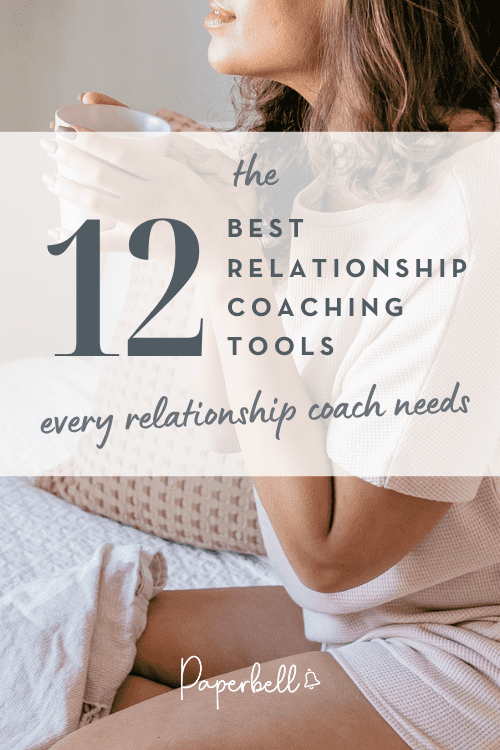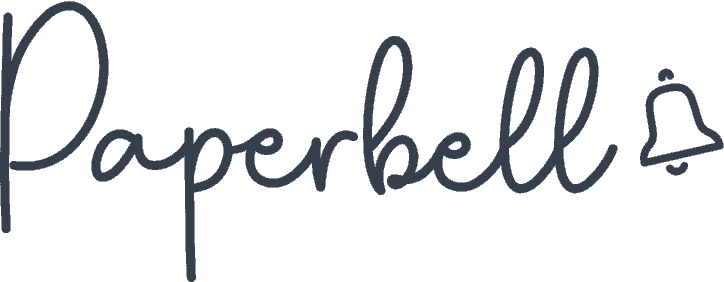Wondering how to help your relationship coaching clients build stronger bonds and achieve deeper intimacy?
When you have the correct tools, you can empower your coaching clients to transform their relationships beyond what they ever thought possible. That’s why we’ve gathered the 12 best relationship coaching tools to help you show up as a better coach!
What are Relationship Coaching Tools?
Relationship coaching tools are designed to help relationship coaches support their clients as they strengthen the bonds in their relationships.
These tools can be assessments, exercises, or boundaries the coach sets to ensure honesty and respect throughout the coaching session.
As a relationship life coach, it’s your job to use these tools to ensure the best possible outcome for your clients. A solid toolkit is what separates a great coach from a mediocre one.
They should matter just as much (if not more) as the tools you use to run your coaching business.
While you can use existing life and relationship coaching tools, you can also develop your own. Over time, several coaches develop their frameworks or models and use them to build unique signature programs.
12 Transformative Relationship Coaching Tools to Use With Clients
1. Relationship Coaching Intake Forms
Before you hop on your first session with your relationship coaching client, send them an intake form and remind them to complete it.
An intake form will allow you to understand your client’s needs since every relationship is unique.
You’ll also be able to jump into your first coaching session with much more context than you’d have without an intake form. This way, you can maximize your time with your clients.
2. Setting Expectations for Every Session
It is important to set expectations with your clients at the start of the coaching relationship. Are their desired outcomes realistic with their chosen coaching package? Do they understand your role as a relationship coach?
You should also set expectations at the start of every session. For example, a couple may come into a session expecting to overcome a recent instance of infidelity. However, that’s a much larger issue that can take several sessions to process and solve.
3. Developing Communication Skills
Couples who want to strengthen their relationships must develop several new skills; communication is the most important.
Healthy communication between people in a relationship will help them do the following:
- Find common ground
- Understand the other person’s perspective
- Get the right point across
Communication skills should come before most others in relationship coaching. Without them, progressing in other aspects of your client’s relationship will be much harder.
4. Using “I” Statements
When your client expresses frustration in a conflict, remind them to use “I” statements instead of “you” statements.
A “you” statement places the blame on the other person, while “I” statements allow the speaker to take ownership of their feelings.
For example, if a client says the following: “You never clean up after yourself.”
Encourage them to say instead: “I feel frustrated and overwhelmed when the house is messy.”
By using “I” statements, your clients can help their significant other see how their behavior affects them personally. It doesn’t shift the blame for the behavior but allows the speaker to take responsibility for their thoughts and feelings.
The situation then becomes a conflict they can resolve together instead of playing the blaming game.
5. A Trust-First Approach
Like communication, trust is vital in a relationship. Some clients may come to you because they have lost it along the way.
Before you discuss specific solutions to their issues, consider taking a trust-first approach. Help them define what trust means to them and how they want to feel when interacting with each other.
Defining trust in a relationship will help promote honesty and transparency, which are key to intimacy.
6. Developing and Enforcing Boundaries
Every healthy relationship, romantic or otherwise, needs boundaries. Having boundaries will help your clients feel safe around each other and rebuild trust.
Some clients may need help enforcing their boundaries or have difficulty respecting others’ boundaries. In both cases, you’ll need to educate and encourage your clients so they know where the lines are.
7. Forget “Nice” and Be “Kind” Instead
There’s a difference between being “nice” and being “kind.” Your clients may not know the difference, which could be causing conflicts in their relationship.
Being “nice” means being agreeable. On the surface, this can help your clients have pleasant conversations.
However, avoiding conflict out of fear of not being “nice” won’t help your clients strengthen their relationships. Quite the opposite: It can cause issues that drag on without being resolved.
When approached healthily, conflicts can help your coaching clients deepen trust and intimacy with each other.
Acting with kindness means to care (and to show you care). Someone who’s kind won’t be afraid to share their point of view and opinion with their significant other—using “I” statements, of course.
8. Creating a Shared Vision
What does the future look like? What are we working towards together?
Your clients can flourish together in their relationships by working towards a shared vision. But if they picture the future differently, they may encounter friction and a lack of connection.
Guide your clients to developing a shared vision of the future together. What values matter to them most? How do they see their life together in 5, 10, or 20 years? What are they working towards in unison?
You can mediate a conversation to start working on this vision within your session. Then, you can give clients additional homework to crystallize it until the next.
9. Assessing Core Needs
Arguments can occur frequently in a relationship when one or both parties can’t meet their core needs.
And it’s impossible to come up with suitable solutions and compromises if they don’t know what those needs are in the first place.
For instance, let’s say you have a client who gets annoyed by her partner’s loud music in the evening. The partner gets frustrated when he’s told to turn it down.
What are the core needs in each situation, and how can both core needs be met?
Perhaps one partner absolutely needs an hour of quiet time before bedtime, while the other needs stimulation from music. In that case, both parties could agree to a schedule in which the partner puts on headphones starting at 9 PM to let his partner wind down in peace.
Remember not to make assumptions. Help your clients assess their core needs before they can devise solutions both of them are happy with.
11. Voxer Coaching in Between Sessions
Are your clients struggling to overcome conflicts in between sessions? Consider using Voxer as a relationship coach to give them additional support.
It’s a voice chat app that lets you communicate with clients instead of traditional Zoom sessions. If you want to include it in your relationship coaching packages, establish clear boundaries on how they can use it.
For instance, you can create specific office hours or schedule an hour a day when you get back to all your clients at once.
Make sure you price your packages accordingly. This type of support is a highly valuable accountability tool that raises the value of your entire program.
11. Understanding Invitations vs. Obligations
Your clients may not want to participate in something with their partner if they feel obligated to do so.
Instead of framing tools and activities as obligations, present them as invitations.
You can also show your clients how they can do the same daily. Help them differentiate between invitations and obligations and determine the right time to use each.
This will help clients feel less pushed around by their partner.
12. Practicing Within Coaching Sessions
Finally, consider scheduling time within your relationship coaching sessions to practice exercises with clients.
The most powerful transformations will occur between sessions. However, they first need to experience new behaviors and communication tools before implementing them in their home lives.
Help them get better at relating to each other in your sessions. It will have a beautiful ripple effect when they leave, bringing more harmony into their relationship.
Facilitate Powerful Relationship Transformations
Keep these relationship coaching tools in your belt for your next session!
In the meantime, here’s another tool you’ll love…
Paperbell handles your contracts, payments, bookings, and client management. It lets you automate your practice, which means less time on admin work and more on creating breakthroughs.
Grab your free Paperbell account now to test all features.

Editor’s Note: This post was originally published in April 2023 and has since been updated for accuracy.









